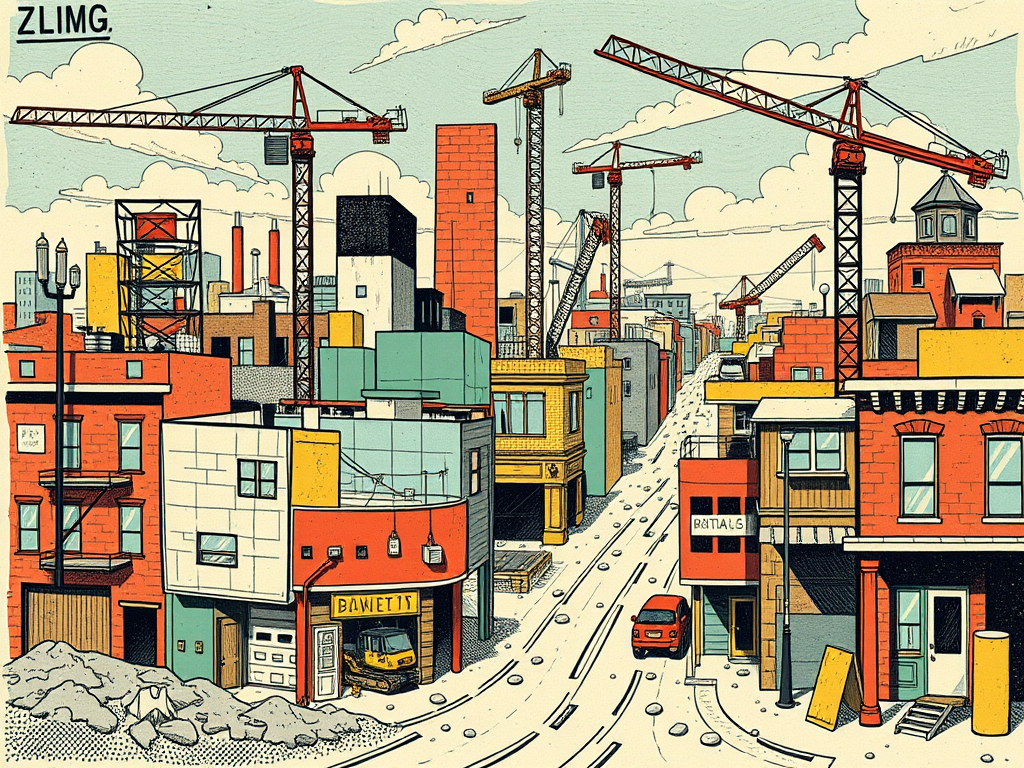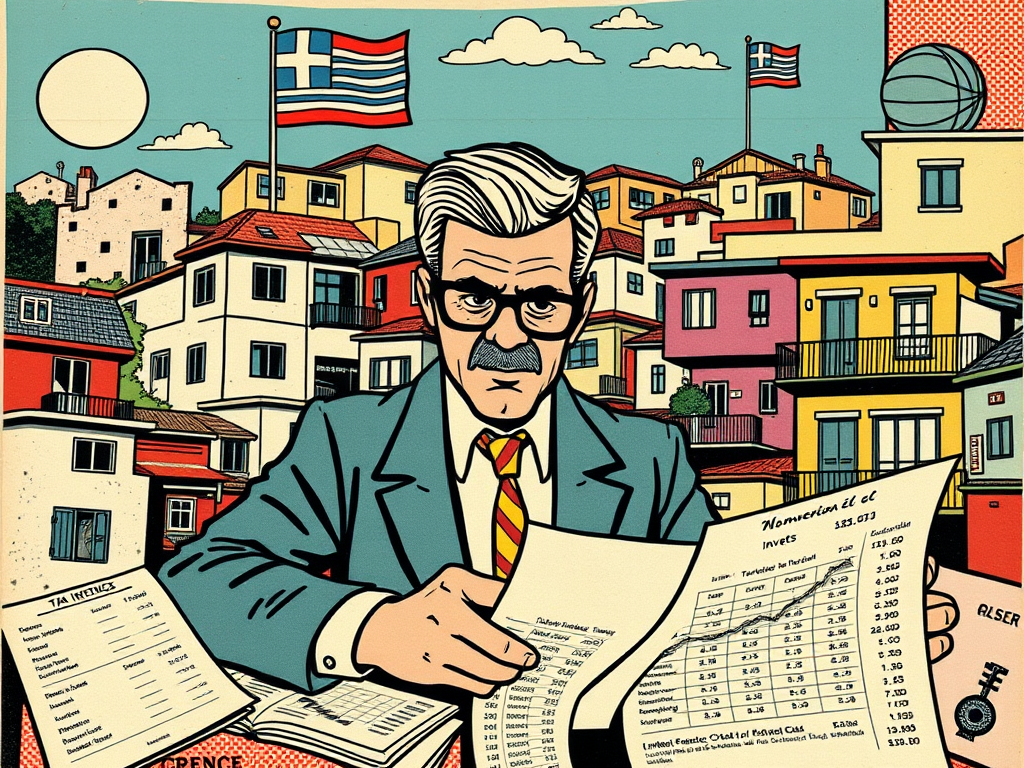
The Effects of Urban Renewal Projects on Greek Property Prices
Table of Contents
1. Introduction
2. Historical Context of Urban Renewal in Greece
3. Key Urban Renewal Projects in Greece
4. Economic Impact on Property Prices
4.1. Short-term Effects
4.2. Long-term Implications
5. Case Studies
5.1. Athens
5.2. Thessaloniki
5.3. Patras
6. Challenges and Opportunities
7. Future Outlook
8. Conclusion
9. FAQs
1. Introduction
Urban renewal projects have become a cornerstone of economic revitalization efforts in many countries, and Greece is no exception. These initiatives aim to breathe new life into aging city centers, improve infrastructure, and enhance the overall quality of life for residents. However, the impact of such projects extends far beyond aesthetic improvements, particularly when it comes to property prices. This comprehensive analysis delves into the multifaceted effects of urban renewal on Greek real estate markets, examining both short-term fluctuations and long-term trends.
As we navigate through this complex economic landscape, it’s crucial to understand that the relationship between urban renewal and property prices is not linear. Instead, it’s a dynamic interplay of various factors, including government policies, private sector investment, and broader economic conditions. By exploring these interconnections, we can gain valuable insights into the future trajectory of Greek property markets and the potential opportunities that may arise for investors, homeowners, and policymakers alike.
2. Historical Context of Urban Renewal in Greece
To fully appreciate the current state of urban renewal in Greece, we must first examine its historical context. The concept of urban regeneration gained prominence in Greece during the post-World War II era, as the country sought to rebuild and modernize its cities. However, it wasn’t until the late 20th century that comprehensive urban renewal strategies began to take shape.
The 1990s marked a turning point for Greek urban planning, with the introduction of more systematic approaches to city development. This shift was driven by several factors:
1. Rapid urbanization and population growth in major cities
2. The need to address deteriorating infrastructure in historic urban centers
3. Preparations for hosting the 2004 Olympic Games in Athens
4. Increasing awareness of environmental sustainability and quality of life issues
These factors coalesced to create a new paradigm for urban development in Greece, one that emphasized the revitalization of existing urban spaces rather than unchecked expansion into surrounding areas. This approach set the stage for the urban renewal projects that would shape Greek cities in the 21st century.
3. Key Urban Renewal Projects in Greece
Greece has undertaken numerous urban renewal projects in recent years, each with its own unique impact on local property markets. Some of the most significant initiatives include:
1. The Hellinikon Project (Athens): This ambitious development aims to transform the former Athens International Airport site into a mixed-use complex featuring residential areas, hotels, parks, and cultural facilities. With an estimated investment of €8 billion, it represents one of the largest urban renewal projects in Europe.
2. Thessaloniki Metro: The ongoing construction of a metro system in Greece’s second-largest city is expected to revolutionize urban mobility and boost property values along its route.
3. Faliro Bay Restoration (Athens): This coastal redevelopment project seeks to create a new cultural and recreational hub along the Athenian Riviera, potentially increasing property values in nearby areas.
4. Patras Marina Expansion: The renovation and expansion of the marina in Patras aim to attract more tourists and boost the local economy, with potential spillover effects on the real estate market.
5. Rhodes Old Town Restoration: Ongoing efforts to preserve and restore the medieval old town of Rhodes have enhanced its appeal to both tourists and property investors.
These projects, among others, have had varying degrees of impact on local property markets, depending on their scale, location, and implementation timeline.
4. Economic Impact on Property Prices
The effects of urban renewal projects on Greek property prices are multifaceted and often evolve over time. To gain a comprehensive understanding, it’s essential to examine both the short-term and long-term implications of these initiatives.
4.1. Short-term Effects
In the immediate aftermath of urban renewal announcements or project initiations, property markets often experience:
1. Speculative price increases: As investors anticipate future value appreciation, prices in targeted areas may rise sharply.
2. Increased transaction volume: Property sales often surge as both investors and homeowners seek to capitalize on potential gains.
3. Rental market fluctuations: Depending on the nature of the project, rental prices may increase due to heightened demand or decrease temporarily if construction causes disruptions.
4. Localized market segmentation: Properties directly affected by renewal projects may see more significant price changes compared to those in peripheral areas.
5. Temporary displacement effects: Some residents may be forced to relocate during project implementation, potentially creating short-term pressure on housing markets in nearby areas.
These short-term effects can create a volatile market environment, with rapid price movements and increased speculation. However, it’s important to note that these initial reactions may not always reflect the long-term sustainability of price changes.
4.2. Long-term Implications
As urban renewal projects progress and reach completion, their long-term impact on property prices becomes more apparent:
1. Sustained value appreciation: Successfully implemented projects often lead to long-term increases in property values, particularly in areas that see significant improvements in infrastructure, amenities, and overall quality of life.
2. Neighborhood transformation: Urban renewal can fundamentally change the character and demographic composition of neighborhoods, potentially attracting new residents and businesses.
3. Economic multiplier effects: Improved urban environments can stimulate local economies, creating jobs and increasing overall prosperity, which in turn supports higher property values.
4. Enhanced international appeal: Well-executed urban renewal projects can boost a city’s global profile, potentially attracting foreign investment and increasing demand for high-end properties.
5. Gentrification concerns: While property values may rise, there are often concerns about the displacement of long-term residents and the loss of neighborhood authenticity.
6. Market stabilization: After initial volatility, property markets in renewed areas often stabilize at a new equilibrium, reflecting the improved urban environment.
Understanding these long-term implications is crucial for investors, policymakers, and residents alike, as they shape the future trajectory of Greek urban property markets.
5. Case Studies
To illustrate the varied effects of urban renewal on property prices across Greece, let’s examine three key case studies:
5.1. Athens
The Greek capital has been at the forefront of urban renewal efforts, with projects like the Hellinikon development and the Faliro Bay restoration leading the way. These initiatives have had significant impacts on local property markets:
– In areas surrounding the Hellinikon project, property prices have increased by an average of 15-20% since the project’s announcement in 2016.
– The Faliro Bay restoration has contributed to a 10-12% rise in property values along the southern coastal suburbs of Athens.
– Central Athens neighborhoods like Metaxourgeio and Kerameikos have seen property prices surge by up to 30% following targeted regeneration efforts.
However, these price increases have not been uniform across the city, with some areas experiencing more modest gains or even stagnation.
5.2. Thessaloniki
Greece’s second-largest city has also undergone significant urban renewal, with the ongoing metro project being a key driver of change:
– Properties located within 500 meters of planned metro stations have seen price increases of 8-12% on average.
– The renovation of the historic Ladadika district has led to a 15-18% rise in commercial property values in the area.
– Residential prices in the city center have increased by an average of 7-9% as urban renewal efforts have made the area more attractive to young professionals and families.
The Thessaloniki case demonstrates how targeted infrastructure projects can have a ripple effect on property values across different market segments.
5.3. Patras
As Greece’s third-largest city, Patras offers an interesting contrast to Athens and Thessaloniki:
– The marina expansion project has led to a 5-7% increase in property values in the immediate vicinity.
– Urban renewal efforts in the historic city center have resulted in a modest 3-5% rise in residential property prices.
– Commercial properties along key thoroughfares have seen value increases of 8-10% following streetscape improvements and pedestrianization efforts.
While the effects in Patras have been less dramatic than in larger cities, they still demonstrate the positive impact of urban renewal on local property markets.
6. Challenges and Opportunities
As Greek cities continue to pursue urban renewal projects, several challenges and opportunities emerge:
Challenges:
1. Balancing gentrification with social equity
2. Securing consistent funding for long-term projects
3. Navigating complex bureaucratic processes
4. Addressing potential environmental concerns
5. Managing public expectations and community resistance
Opportunities:
1. Attracting foreign investment in real estate and urban development
2. Improving overall quality of life for residents
3. Enhancing Greece’s competitiveness as a destination for business and tourism
4. Creating new jobs in construction, services, and related industries
5. Developing more sustainable and resilient urban environments
Successfully addressing these challenges while capitalizing on opportunities will be crucial for maximizing the positive effects of urban renewal on Greek property markets.
7. Future Outlook
Looking ahead, several factors are likely to shape the future impact of urban renewal on Greek property prices:
1. Economic recovery: As Greece continues to emerge from its economic crisis, increased domestic and foreign investment may accelerate urban renewal efforts and property value appreciation.
2. Technological integration: Smart city initiatives and the incorporation of advanced technologies into urban renewal projects could enhance their impact on property values.
3. Sustainability focus: Growing emphasis on green spaces, energy efficiency, and sustainable urban design may influence property preferences and valuations.
4. Demographic shifts: Changing population dynamics, including an aging population and migration patterns, will affect demand for different types of properties in renewed urban areas.
5. Policy evolution: Future government policies on urban planning, taxation, and foreign investment will play a crucial role in shaping the real estate market landscape.
As these factors interact, we can expect continued dynamism in Greek property markets, with urban renewal remaining a key driver of value creation and market evolution.
8. Conclusion
Urban renewal projects have undeniably had a significant impact on Greek property prices, reshaping the real estate landscape across major cities. While the effects have varied in scale and duration, the overall trend points towards value appreciation in areas targeted for regeneration.
The case studies of Athens, Thessaloniki, and Patras illustrate the diverse outcomes of urban renewal initiatives, highlighting the importance of local context and project specifics in determining market impacts. As Greece continues to invest in urban revitalization, property markets are likely to remain dynamic, offering both challenges and opportunities for stakeholders.
Moving forward, the success of urban renewal in driving sustainable property value growth will depend on careful planning, community engagement, and adaptive strategies that respond to evolving economic and social conditions. By learning from past experiences and anticipating future trends, Greece can leverage urban renewal as a powerful tool for economic development and improved quality of life, with positive spillover effects on the real estate market.
9. FAQs
1. Q: How long does it typically take for urban renewal projects to impact property prices?
A: The timeline can vary significantly depending on the scale and nature of the project. Some effects may be seen immediately upon project announcement, while others may take 5-10 years to fully materialize as projects are completed and neighborhoods transform.
2. Q: Are there any negative effects of urban renewal on property prices?
A: While urban renewal generally leads to price appreciation, it can sometimes result in over-speculation or unsustainable short-term price bubbles. Additionally, increased property values may lead to affordability issues for long-term residents, potentially leading to displacement.
3. Q: How do urban renewal projects affect rental markets?
A: Urban renewal often leads to increased rental prices as areas become more desirable. However, this can be offset by an increase in housing supply if new residential developments are part of the renewal project.
4. Q: What role do foreign investors play in Greek urban renewal and property markets?
A: Foreign investors have become increasingly important in Greek urban renewal, particularly in large-scale projects. Their involvement can accelerate development and contribute to price appreciation, especially in high-end and tourist-oriented markets.
5. Q: How can local residents benefit from urban renewal without being priced out of their neighborhoods?
A: Policymakers can implement measures such as affordable housing quotas, rent stabilization policies, and local employment initiatives to help ensure that existing residents can benefit from urban renewal. Community involvement in the planning process is also crucial for balancing diverse interests.

Article reviewed by Sophia Georgiadou, Global Expansion Consultant | Market Entry Strategist | Breaking Into Emerging Markets with Tailored Localization Plans, on March 7, 2025




